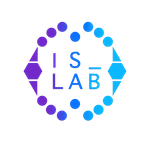E. Kontopoulos, N. Bassiliades, G. Antoniou, “Visual Development of Defeasible Logic Rules for the Semantic Web”, Visual Languages for Interactive Computing: Definitions and Formalizations, F. Ferri (Ed.), Idea Group Publishing, pp. 273-301, 2007.
Author(s): E. Kontopoulos, Nick Bassiliades, G. Antoniou
Appeared In: Visual Languages for Interactive Computing: Definitions and Formalizations, F. Ferri (Ed.), Idea Group Publishing, pp. 273-301, 2007.
Keywords: Non-monotonic Reasoning, Defeasible Logic, Semantic Web, Visual Representation, Information Visualization
Tags:
Abstract: This chapter is concerned with the visualization of defeasible logic rules in the Semantic Web domain. The Semantic Web expresses an initiative to improve the World Wide Web, by adding semantic content to the provided information, thus making the data accessible not only to humans but to machines as well. Logic plays an important role in the development of the Semantic Web and defeasible reasoning seems to be a very suitable tool in this affair, since it allows reasoning with incomplete and conflicting information. However, defeasible reasoning is too complex for an end-user, who often needs graphical trace and explanation mechanisms for the derived conclusions. Directed graphs can assist towards this direction, by offering a powerful and flexible means of information visualization. The notion of direction, featured by directed graphs, appears to be extremely applicable for the representation of rule attacks and superiorities in defeasible reasoning. Their applicability, however, is balanced by the fact that it is difficult to associate data of a variety of types with the nodes and the connections between the nodes in the graph. In this chapter we try to utilize digraphs in the graphical representation of defeasible rules, by exploiting the expressiveness and comprehensibility they offer, but also trying to leverage their major disadvantage, by proposing a representation approach that features two distinct node types, for rules and atomic formulas, and four distinct connection types for each rule type in defeasible logic and for superiority relationships. Finally, the chapter briefly presents a tool that implements this representation methodology.
